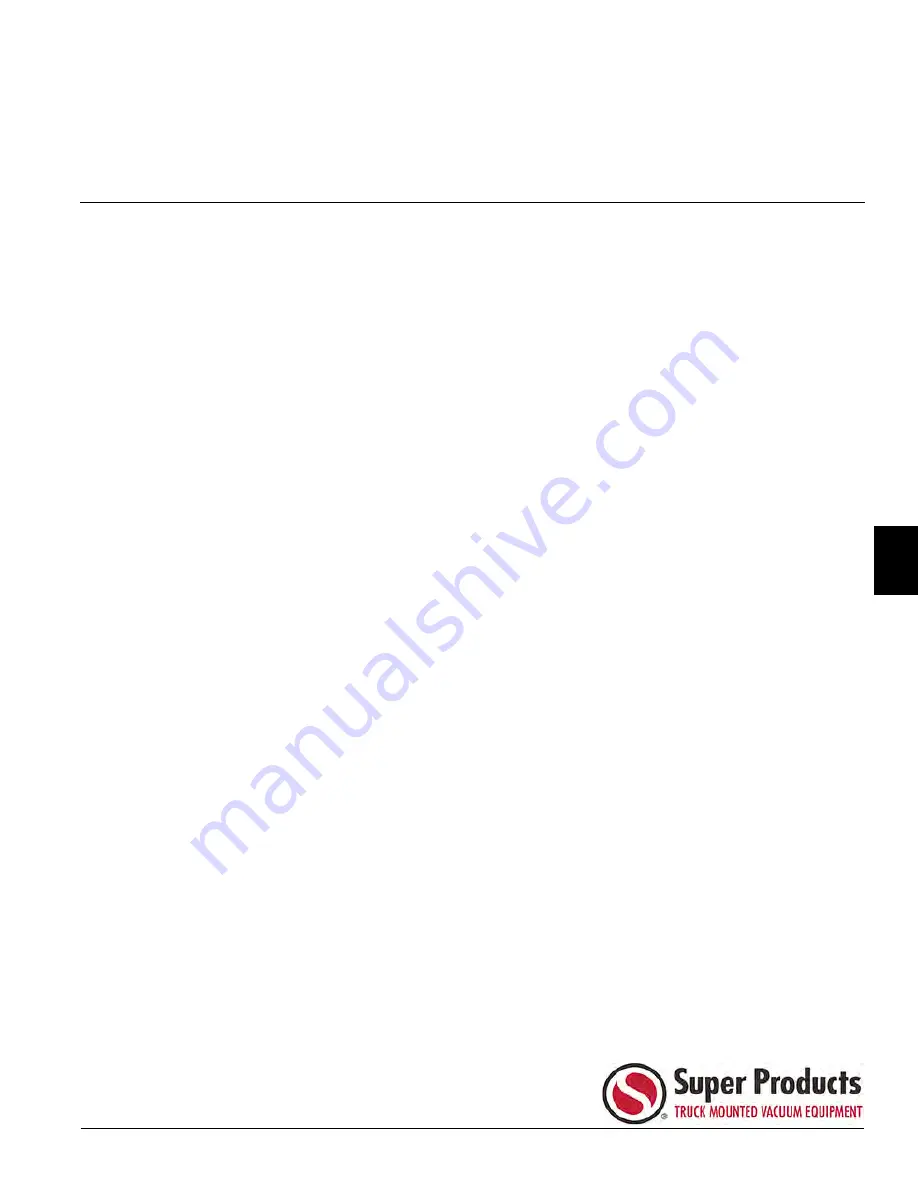
Publication: 0028607
5-1
Chapter 5
5
Water Recycling System
Camel Recycling System
Summary
The onboard vacuum system transfers sewer water and
debris from the sewer to the debris body. The water-
saving recycling system automatically filters the sewer
water and supplies it to the high-pressure water pump for
reuse during sewer jetting work. This system allows the
operator to continue working by continuously recycling
sewer water used for jetting and not having to stop the
jetting process to travel elsewhere to refill with potable
water.
Control System Operation
The water-recycling system is a fully automatic system
once in operation. All controls are located at the front
control panel HMI screen. When selected by the
operator, it will function as long as a sufficient water
supply exists in the debris body. Water levels will be
monitored at the front control panel HMI screen as Debris
Level.
When the water-recycling system is in full operation, the
control system will monitor the flow of water through the
secondary filter using pressure switches. If pressure
drops below 5PSI the control system will automatically
send a message to the HMI screen to initiate a
high-pressure flush. This diverts flow from the water
pump by way of two pneumatic valves to internally flush
the wedge wire filter at 2000 PSI. The operator is able to
choose clean flush using dirty water, or fresh flush which
requires fresh water from the tanks to be diverted to the
water pump to fully clean the filter.
Diagnostic and System Status
Features
1.
Acculevel Debris Level Sensor — This monitors
the debris level inside the debris body and will inform
the operator to shut off vacuum or will break the
vacuum automatically when the debris levels become
too high.
2.
Low Water Level Switch — This float switch will
alert the operator when the water level in the tank is
too low, giving the operator time to stop jetting and
vacuum up more water from the system without
drawing air into the pump. This feature can be
overridden to decant all of the remaining water in the
debris body at the end of the day by holding down the
recycling button on the front panel.
3.
Y-Strainer Pressure Gauge — This gauge is
located on the driver’s side of the truck on the front
side of the heat exchanger and measures the water
pressure after the Y-strainer. If this pressure drops
independently of the primary filter gauge, the HMI
screen will alert the operator that the Y-strainer is
clogged.
4.
Primary Filter Gauge — This gauge is located on
the passenger side of the truck in front of the charge
pump and measures the water pressure after the
pump. If the pressure becomes too low and the
Y-strainer pressure gauge is also low, the HMI screen
will alert the operator that the tank filter needs
cleaning. This can be accomplished by performing
either a clean filter cycle or a fresh flush cycle.
5.
Audible Noise (clunking) of the Rotating Primary
Filter — This noise heard at the passenger side of
the truck at the tank head will alert the operator that
the filter is oscillating and being cleaned by the
low-pressure external flush.
Summary of Contents for Camel 1200 (Dump Body)
Page 1: ......
Page 2: ......
Page 4: ......
Page 62: ...1 52 Publication 0028607 SAFETY 1...
Page 64: ...2 2 Publication 0028607 PRE OPERATION 2 Figure 2 1 Figure 2 2 1 3 2 5 6 4 7...
Page 106: ...4 18 Publication 0028607 SEWER CLEANING TYPICAL SEQUENCE 4...
Page 118: ...5 12 Publication 0028607 WATER RECYCLING SYSTEM 5...
Page 132: ...6 14 Publication 0028607 LUBRICATION AND MAINTENANCE 6...
Page 156: ...i vi Publication 0028607 IX...
Page 157: ......






































